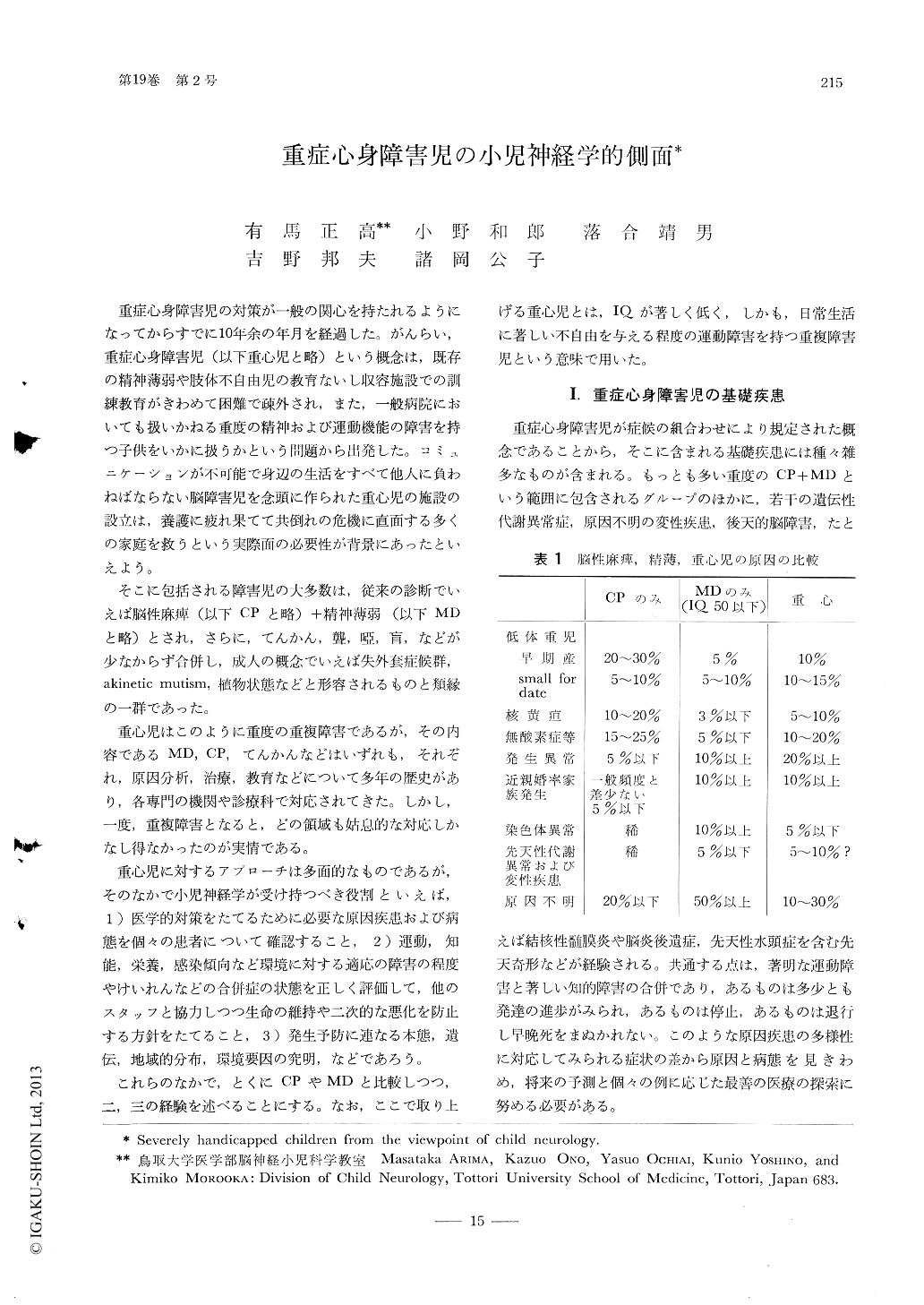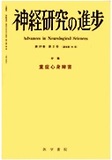Japanese
English
- 有料閲覧
- Abstract 文献概要
- 1ページ目 Look Inside
重症心身障害児の対策が一般の関心を持たれるようになってからすでに10年余の年月を経過した。がんらい,重症心身障害児(以下重心児と略)という概念は,既存の精神薄弱や肢体不自由児の教育ないし収容施設での訓練教育がきわめて困難で疎外され,また,一般病院においても扱いかねる重度の精神および運動機能の障害を持つ子供をいかに扱うかという問題から出発した。コミュニケーションが不可能で身辺の生活をすべて他人に負わねばならない脳障害児を念頭に作られた重心児の施設の設立は,養護に疲れ果てて共倒れの危機に直面する多くの家庭を救うという実際面の必要性が背景にあったといえよう。
そこに包括される障害児の大多数は,従来の診断でいえば脳性麻痺(以下CPと略)+精神薄弱(以下MDと略)とされ,さらに,てんかん,聾,唖,盲,などが少なからず合併し,成人の概念でいえば失外套症候群,akinetic mutism,植物状態などと形容されるものと類縁の一群であった。
Severely handicapped children are defined as those with marked disturbances of both motor and mental functions where training is very difficult.
More than half of children with the condition have been diagnosed as cerebral palsies with men-tal retardation. From the etiological standpoint, however, there are differences among the groups of trainable cerebral palsies, trainable or severe mental retardation and the severely handicapped.
In trainable cerebral palsies, premature birth is the most predominant causative factor, and perinatal anoxia and jaundice follow it.

Copyright © 1975, Igaku-Shoin Ltd. All rights reserved.


